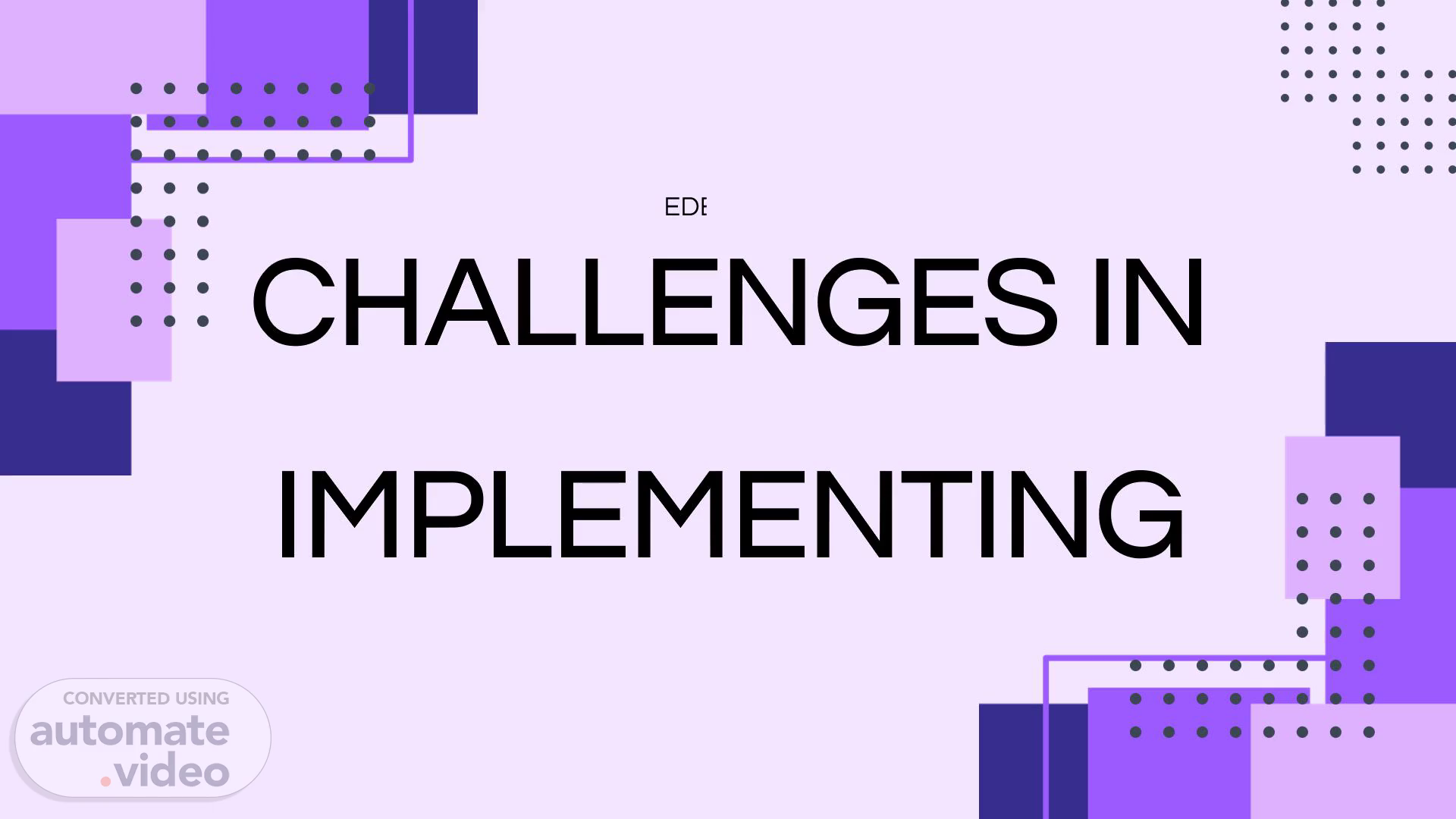
Page 1 (0s)
CHALLENGES IN IMPLEMENTING. by. S.M. Reyes. EDEM0008.
Page 2 (9s)
LEARNING OBJECTIVES:. Participants will be able to identify the challenges in the implementation of strategic plans. Participants will understand the key areas to evaluate the implementation and monitoring of strategic plans, including the use of performance metrics and KPIs. Participants will recognize the critical role of stakeholder engagement in successful institutional planning. Participants will understand the importance of feedback and continuous improvement in strategic planning and be able to design a feedback loop for their organization..
Page 3 (32s)
CHALLENGES/ BARRIERS. Strategic Challenges Resource Constraints Alignment with Institutional Goals Operational Challenges Measuring and Monitoring Progress Sustaining Momentum.
Page 4 (45s)
EVALUATION, ASSESSMENT, & REVISIONS. c/o Sister Ligaya.
Page 5 (59s)
c/o Sister Ligaya. Process (Revision) Prioritize adjustments Re-alignment with goals Incorporate Feedback Update Action Plans Communicate change.
Page 6 (1m 12s)
ACCOUNTABILITY FOR PLANNING. Clear Roles and Responsibilities Defined Roles Responsibility Matrix (RACI) Transparent Decision-Making Documentation Inclusive Processes Regular Reporting and Monitoring Progress Reports Performance Metrics Evaluation and Feedback Continuous Feedback Formal Evaluations.
Page 7 (1m 32s)
PLANNING PROCESS & DOCUMENTS. Planning Framework (Methodology, Phases) Stakeholder Involvement (Inclusion, Feedback Mechanisms) Decision-making (Clarity, Transparency) Resource Allocation (Alignment, Sustainability) Flexibility and Adaptability (Adaptation, Innovation).
Page 8 (1m 47s)
PLANNING PROCESS & DOCUMENTS. Clarity and Readability (Language, Structure) Alignment with Institutional Goals (Consistency, Strategic Priorities) Specificity and Measurability (Objectives, Action Plans) Inclusivity and Stakeholder Focus (Stakeholder Consideration, Equity) Risk Management (Risk Identification, Contingency Planning) Evaluation and Monitoring (Monitoring Framework, Evaluation Criteria).
Page 9 (2m 5s)
PLANNING PROCESS & DOCUMENTS. Identify Strengths Identify Weaknesses Opportunities for Improvement Best Practices Implementation Plan.
Page 10 (2m 16s)
CONCLUSION. By integrating evaluation, assessment, and revision processes into the strategic planning cycle, educational institutions can ensure that their strategic plans are dynamic, responsive, and capable of driving sustained success. Embedding accountability into every stage of the strategic planning process ensures that educational institutions’ plans are not only implemented effectively but also lead to tangible improvements in organizational performance and outcomes. By conducting a thorough analysis of both the planning process and the supporting documents, institutions can gain valuable insights into the effectiveness of their strategic planning efforts and identify opportunities for continuous improvement..
Page 11 (2m 43s)
REFERENCES:. Lorem ipsum dolor sit amet, consectetur adipiscing elit, sed do eiusmod tempor incididunt ut labore et dolore magna aliqua. Ut enim ad minim veniam, quis nostrud exercitation ullamco laboris nisi ut aliquip ex ea commodo consequat. Duis aute irure dolor in reprehenderit in voluptate velit esse cillum dolore eu fugiat nulla pariatur. Excepteur sint occaecat cupidatat non proident, sunt in culpa qui officia deserunt mollit anim id est laborum..
Page 12 (3m 5s)
THANK YOU. by. SM Reyes. EDEM0008.